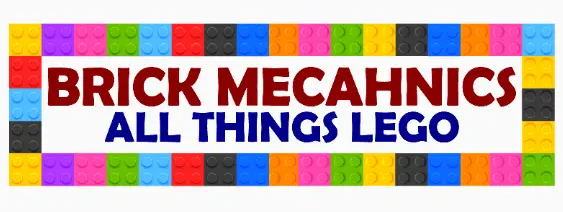Are you planning to buy a LEGO set and noticed some are no longer available or labeled as “retired”? You’re not alone.
LEGO is a world-renowned brand loved by kids and adults alike. Beyond their original creations, LEGO frequently partners with popular franchises like Star Wars and Harry Potter, releasing themed sets that often become fan favorites.
But even with this success, LEGO sets don’t stay on shelves forever. So, why do LEGO sets retire, and how can you know when it’s about to happen?
Let’s break it down.

Table of Contents
Why Do LEGO Sets Retire?
LEGO sets retire for multiple reasons, but it usually comes down to limited shelf space, popularity, profitability, and market trends. Below are the most common factors:
1. Set Performance
If a LEGO set stops selling well, it takes up valuable shelf space that could be used for newer sets. Unlike consumable products, most people only buy a specific LEGO set once, so long-term sales tend to drop.
When interest declines, especially for sets tied to short-lived trends or media releases, LEGO retires them to keep the product lineup fresh.
2. Profitability
LEGO, like any company, has to keep an eye on profits. If a set becomes unprofitable to produce (due to high costs or low demand), it’s often retired. Retiring older sets also encourages collectors and fans to buy newer releases.
3. Marketability and Licensing
Sets based on movies or licensed themes often have a short shelf life. Once a movie fades from public attention, related LEGO sets usually do too.
Sometimes newer or upgraded versions of existing sets replace older ones—for example, newer Millennium Falcon models often make older versions obsolete.
Occasionally, LEGO also retires sets to increase rarity and appeal among collectors, adding to the brand’s prestige.
How Long Do LEGO Sets Stay in Production?
There’s no fixed formula, but most LEGO sets stay on the market for an average of 1.5 to 2 years. However, this varies by set type and popularity.
- Some general trends:
Popular sets may stay longer. - Modular buildings usually retire one per year.
- Unpopular sets may be pulled early.
- Creator sets often stay around for several years.
- Licensed sets typically match the media cycle (e.g., movie releases).
These are trends—not official rules—and LEGO doesn’t publicly disclose retirement timelines. You’ll only know for sure when a set is marked “Retiring Soon.”
How Can You Tell When a LEGO Set Will Retire?
The most reliable way is to check the LEGO Online Shop. If a set is labeled “Retiring Soon,” that’s your cue. We also have a database of retiring LEGO sets.
You can also use trusted LEGO databases like:
- Brickmechanics.com
- BrickLink
- Brickset
- Peeron
These sites track set release dates, retirement timelines, and community discussions, giving you extra insight.
Do LEGO Sets Ever Come Out of Retirement?
Yes, but it’s rare. LEGO occasionally revives popular sets—usually with minor updates—due to high demand.
Examples include:
- Taj Mahal (returned after nearly 8 years)
- Metroliner 4558/10001
- Several Star Wars sets were brought back with each new movie release
However, these aren’t exact re-releases but improved versions or anniversary editions.
Do Retired LEGO Sets Go Up in Value?
Often, yes—especially if:
- The set was highly popular
- It’s unopened and in the original packaging
- It’s rare or collectible
Some sets double or triple in value within a couple of years after retirement. As soon as LEGO adds the “Retiring Soon” label, fans and collectors rush to grab them, which can drive prices up.
However, not all retired sets increase in value, and market trends vary.
Final Thoughts
LEGO retires sets to manage shelf space, update their catalog, and keep the product line profitable and engaging. While there’s no official schedule, patterns show most sets last around two years.
If you spot a set labeled “Retiring Soon,” it’s wise to grab it before it’s gone, especially if it’s tied to a licensed theme or a fan-favorite model.
And yes, retired sets can become collectors’ items, but only time (and market demand) will tell which ones truly become LEGO gold.


